How to Calculate Segment Lengths in Circles Using the Power Theorem
In the vast realm of geometry, circles hold a unique fascination, primarily due to their perfect symmetry and endless periphery. One of the intriguing aspects of circle geometry is the study of segment lengths within these closed curves. Segments, which are areas bound by chords and arcs, vary in length depending on their position and the angles subtended by their bounding chords. The lengths of these segments can reveal a wealth of information about the circle and its associated properties. As we delve deeper into the subject, we'll uncover the mathematical intricacies behind these lengths and explore how they interplay with other geometric elements of the circle, laying the groundwork for further investigations into the more advanced concept of the power theorem.
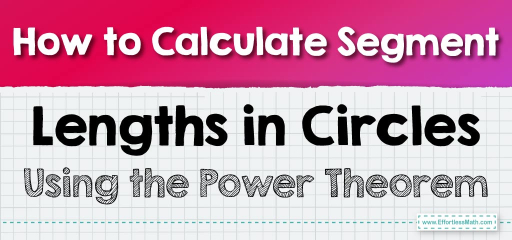
Step-by-step Guide: Segment Lengths in Circle
1. Chord-Chord Power Theorem:
When two chords intersect inside a circle, the product of the lengths of the segments of one chord equals the product of the lengths of the segments of the other chord.
Mathematically, if \(AB\) and \(CD\) are intersecting chords, then:
\( AE \times EB = CE \times ED \)
2. Tangent-Secant Power Theorem:
When a tangent and a secant intersect outside a circle, the square of the length of the tangent segment equals the product of the lengths of the secant’s entire length and its external segment.
Mathematically, if \(PA\) is a tangent and \(PBC\) is a secant, then:
\( PA^2 = PB \times PC \)
3. Secant-Secant Power Theorem:
When two secants intersect outside a circle, the product of the lengths of one secant and its external segment equals the product of the lengths of the other secant and its external segment.
Mathematically, if \(PAB\) and \(PCD\) are intersecting secants, then:
\( PA \times PB = PC \times PD \)
Examples
Example 1:
Two intersecting chords in a circle, \(AB\) and \(CD\), are divided into segments of \(3 \text{ cm}\), \(4 \text{ cm}\), \(2 \text{ cm}\), and \(x\) respectively. Using the Chord-Chord Power Theorem, determine the value of \(x\).
Solution:
According to the Chord-Chord Power Theorem:
\( AE \times EB = CE \times ED \)
Given: \( AE = 3 \text{ cm} \) and \( EB = 4 \text{ cm} \)
\( 3 \times 4 = 2 \times x \)
\( x = 6 \text{ cm} \)
Example 2:
A circle has a tangent \(PA\) of length \(5 \text{ cm}\) and a secant \(PBC\) with segment \(PB\) measuring \(3 \text{ cm}\) and \(PC\) measuring \(7 \text{ cm}\). Validate the Tangent-Secant Power Theorem with the given data.
Solution:
According to the Tangent-Secant Power Theorem:
\( PA^2 = PB \times PC \)
Given: \( PA = 5 \text{ cm} \), \( PB = 3 \text{ cm} \), \( PC = 7 \text{ cm} \)
\( 5^2 = 3 \times 7 \)
This holds false since \(25 \neq 21\).
Example 3:
Two secants, \(PAB\) and \(PCD\), intersect outside a circle. The given measurements are: \(PA = 2 \text{ cm}\), \(AB = 4 \text{ cm}\), \(PC = 3 \text{ cm}\), and \(CD = y\). Use the Secant-Secant Power Theorem to determine the value of \(y\).
Solution:
According to the Secant-Secant Power Theorem:
\( PA \times PB = PC \times PD \)
Given: \( PB = PA + AB = 2+4 = 6 \text{ cm} \), \( PD = 3 + y \text{ cm} \)
\( 2 \times 6 = 3 \times (3+y) \)
On solving, \( y = 1 \text{ cm} \).
Practice Questions:
- Two intersecting chords in a circle have lengths of segments as \(2 \text{ cm}\), \(8 \text{ cm}\), \(3 \text{ cm}\), and \(x\). Find \(x\).
- A tangent of length \(6 \text{ cm}\) intersects with a secant of full length \(10 \text{ cm}\) and what is the external segment?

Answers:
- \( x = 5.33 \text{ cm} \)
- External segment \( = 3.6 \text{ cm} \)
Related to This Article
More math articles
- How To Solve Word Problems for Explaining Fractions as Division
- Your Winning Game Plan: How to Use Angle Relationships to Write and Solve Equations
- Using Number Lines to Represent Rational Numbers
- How to Show the Relation in the Coordinate Plane
- FREE 6th Grade PSSA Math Practice Test
- The Ultimate 7th Grade CMAS Math Course (+FREE Worksheets)
- How to Compare Amounts of Money?
- How to Graph Triangles and Quadrilaterals?
- How is the FTCE General Knowledge Test Scored?
- Top 10 7th Grade STAAR Math Practice Questions




















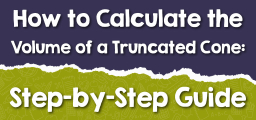
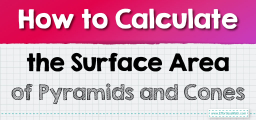
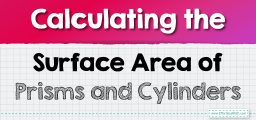
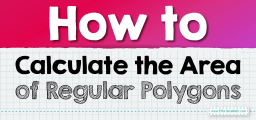


What people say about "How to Calculate Segment Lengths in Circles Using the Power Theorem - Effortless Math: We Help Students Learn to LOVE Mathematics"?
No one replied yet.